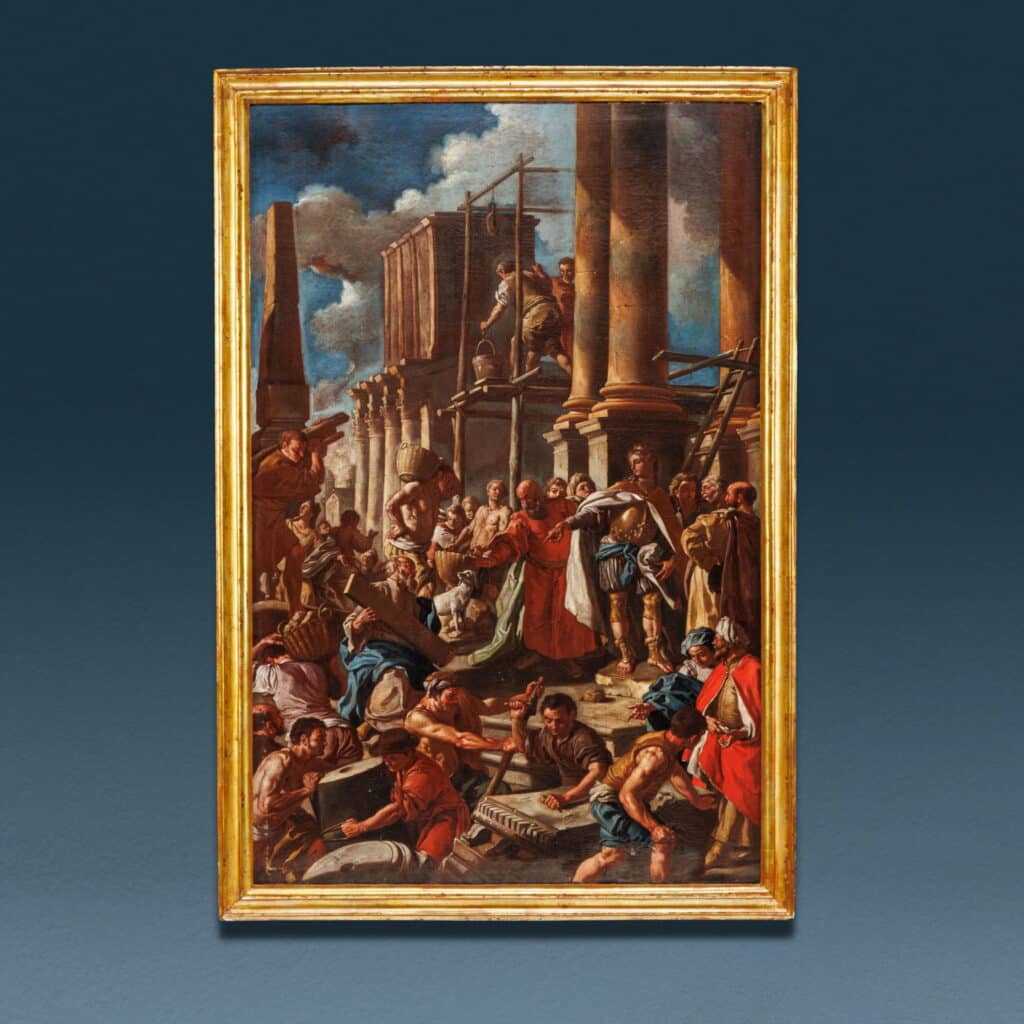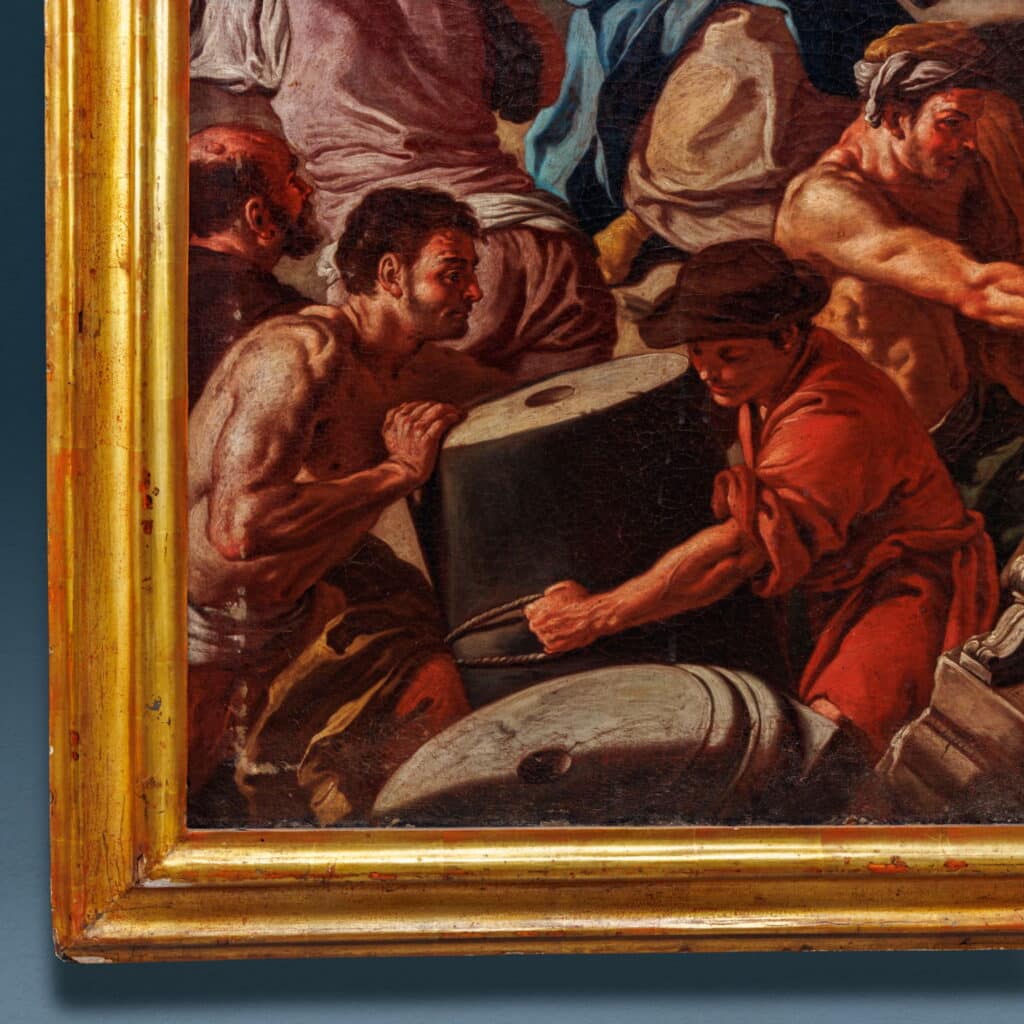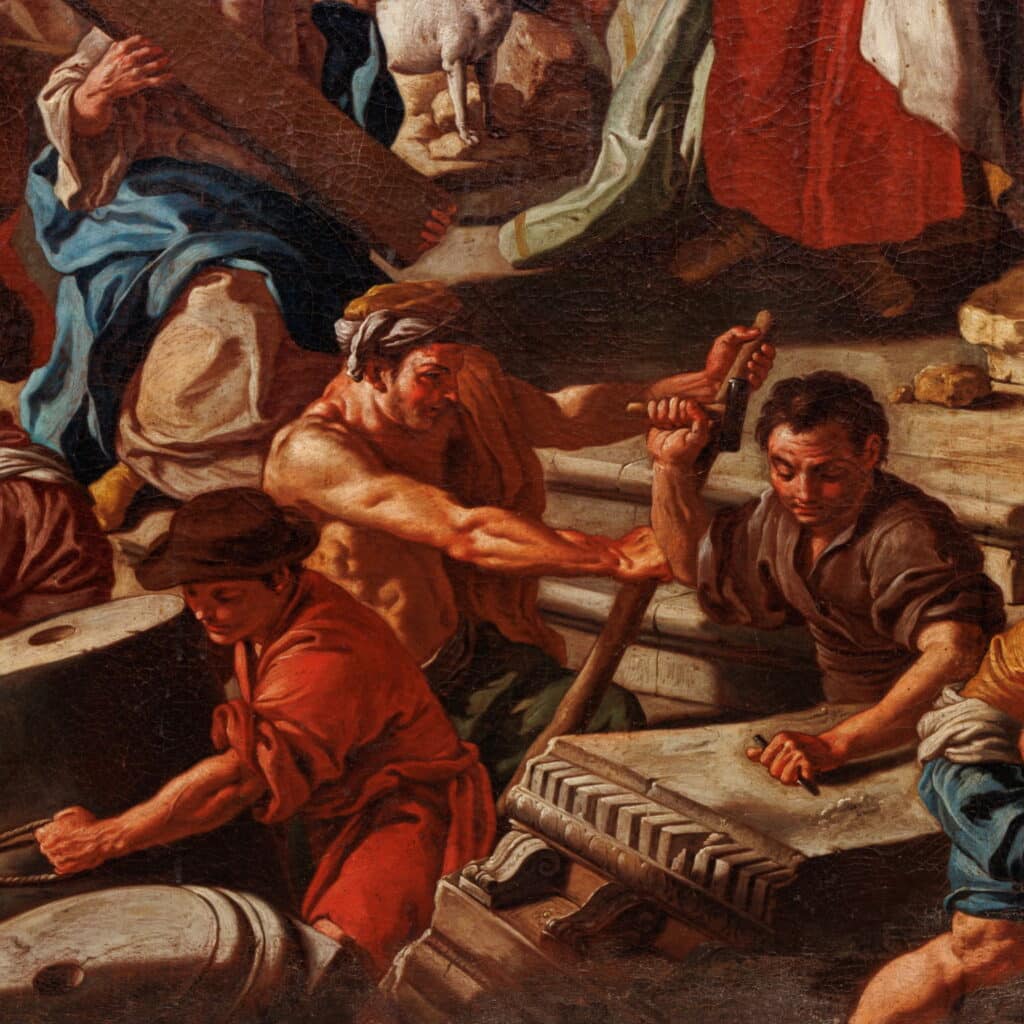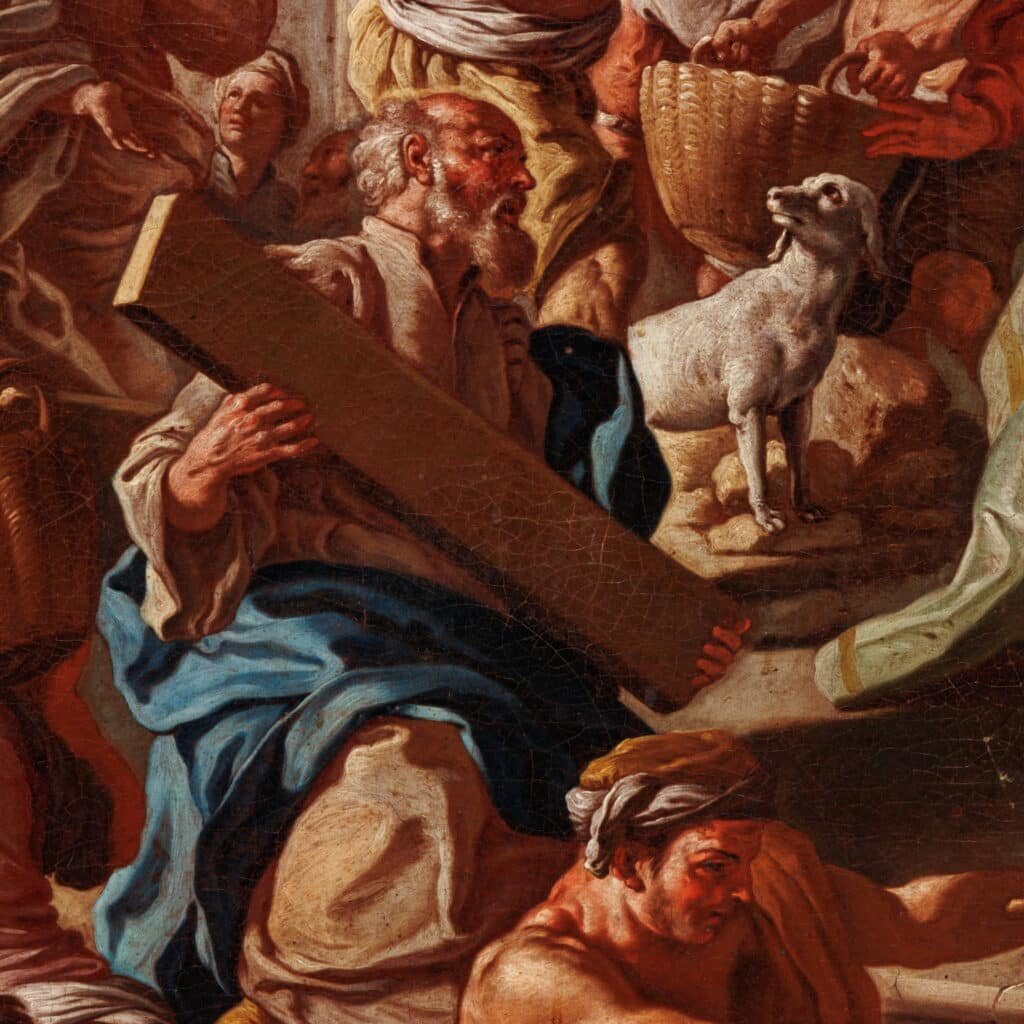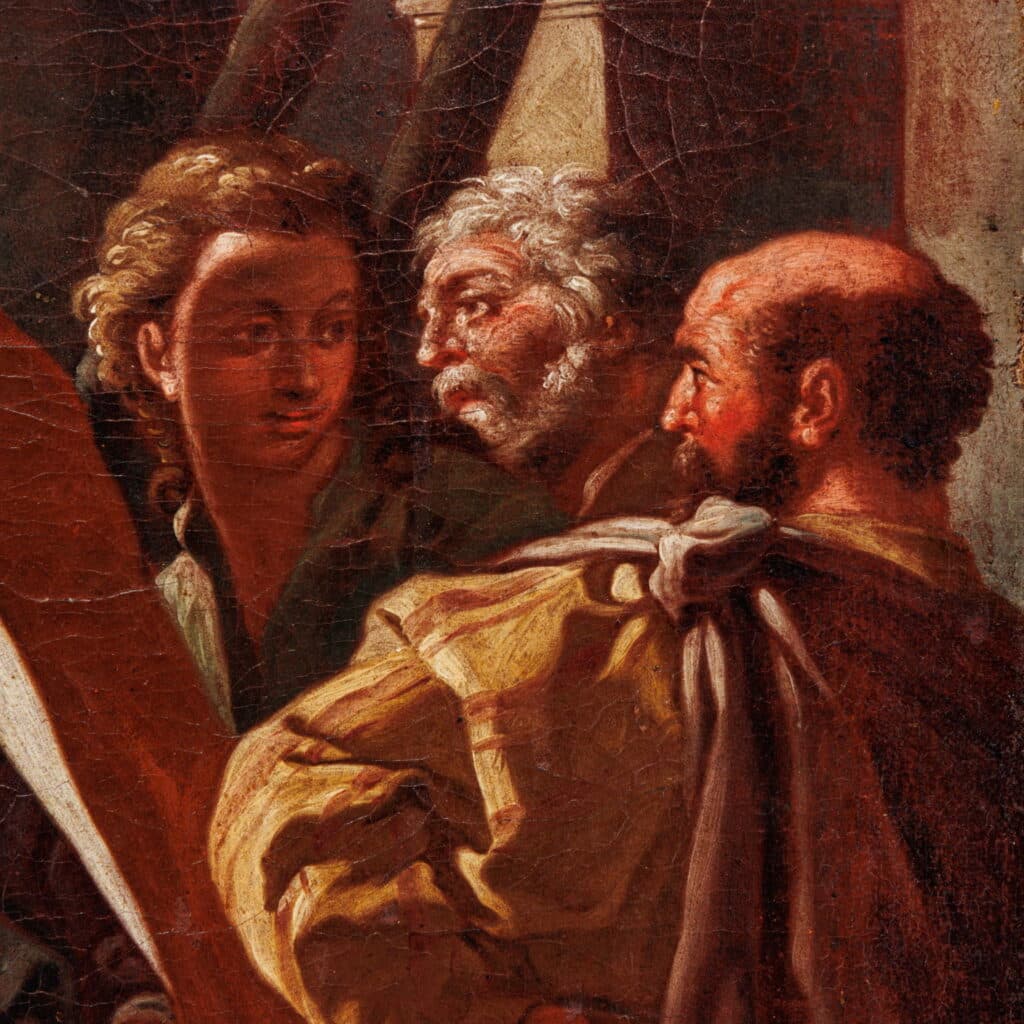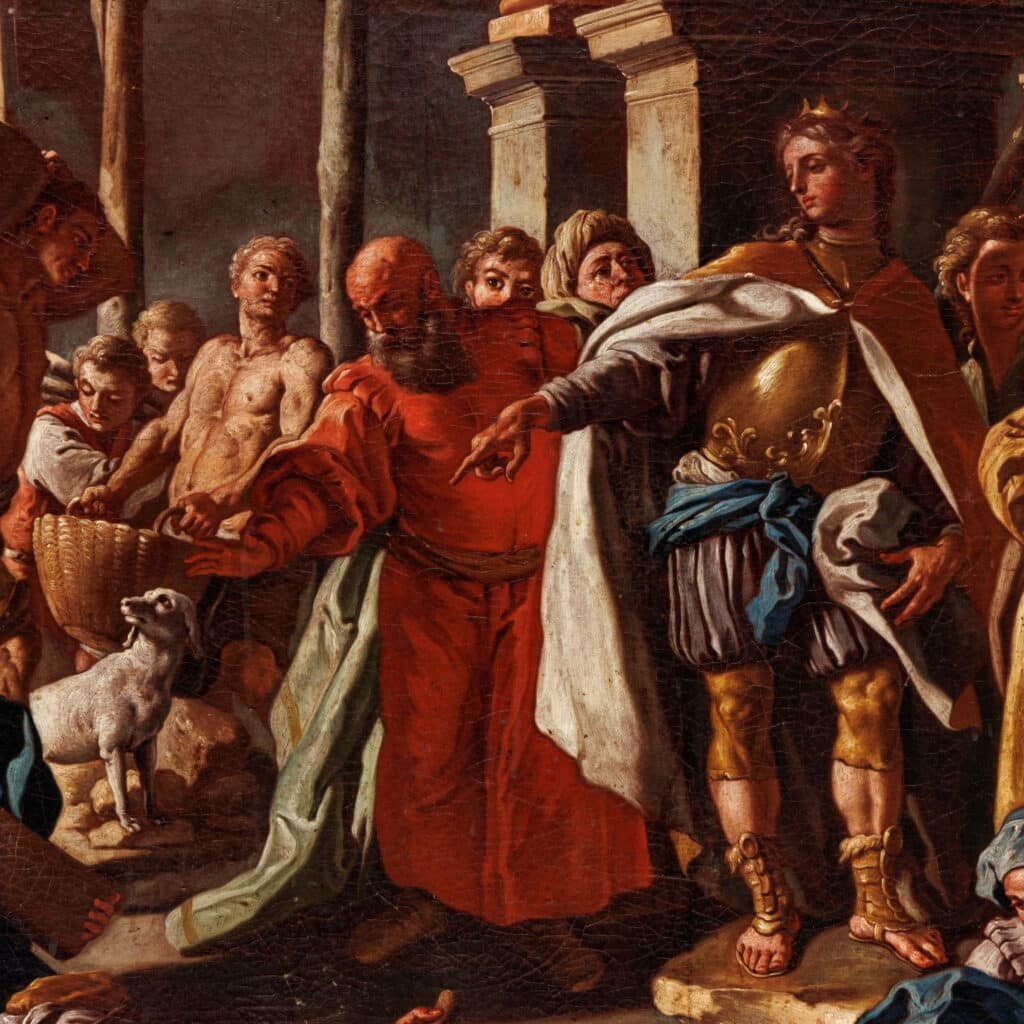Francesco De Mura (Naples 1696-1782) and boutique. Restoration of the Temple of Solomon. c. 1751-’52
Description:
Oil painting on canvas depicting a large choral scene, where various figures are at work in the construction of an architecture with classical features. The foreground shows masons intent on moving heavy stone blocks for the construction of the imposing colonnade, while a stonemason is busy making the indentation decorating the frieze. All around, other figures are carrying baskets full of stones and wood, while others, further to the right, are talking among themselves, probably the architects overseeing the work, as their rich and well-groomed clothes also show. In the background, the colonnade in the making can be glimpsed, with its wooden scaffolding, while part of the building has already been erected.
The centre of the frame is occupied by two figures, one kneeling, with a beard and wispy hair, holding a wooden plank. His advanced age and well-groomed clothes suggest that he too is not a worker, but rather a construction manager. The other protagonist is instead standing, slightly elevated on a stone block, pointing to the first figure. Young and with an austere and regal profile, he is dressed in military uniform, with a golden breastplate surmounted by a heavy cape; as the crown on his head also suggests, he represents a royal overseeing construction work.
Restored and relined, it is presented in a coeval frame.
Dimensions: 155 x 101 cm
Code: ARARPI0220296
Historical-stylistic analysis:
Accompanied by an expert report by Stefano Causa, the painting is probably a sketch for the panel painted by Francesco de Mura for the counter façade of the church of Santa Chiara in Naples, depicting the Restoration of the Temple of Solomon. The work, unfortunately lost during the bombing of 1943, is known to us through Alinari black and white photographs, allowing for interesting comparisons.
Three other paintings are known for which the status of a sketch can be advanced, which in fact differ from the painting already in Santa Chiara in the double order of sculptures in the architecture behind, where they are instead replaced by pyramids in an antique style. Closer to the final version is the one under examination here, which is devoid of any decorative elements and therefore, in addition to stylistic reasons, allows the hypothesis that it may be a later copy to be dismissed.
From a stylistic point of view, Causa also argues that the work can be understood to be by the hand of De Mura, assisted by his workshop, particularly in the figure of Paolo de Majo, active in the Neapolitan basilica between 1752 and 1756, and of whom several formal requirements can be recognised here.
- Francesco De Mura (Naples 1696-1782) and boutique. Restoration of the Temple of Solomon. c. 1751-’52

Antiques, Art and Design
FineArt is the new ambitious Di Mano in Mano project that offers an exclusive choice of antiques and design works, presenting them for their singularity and uniqueness.

